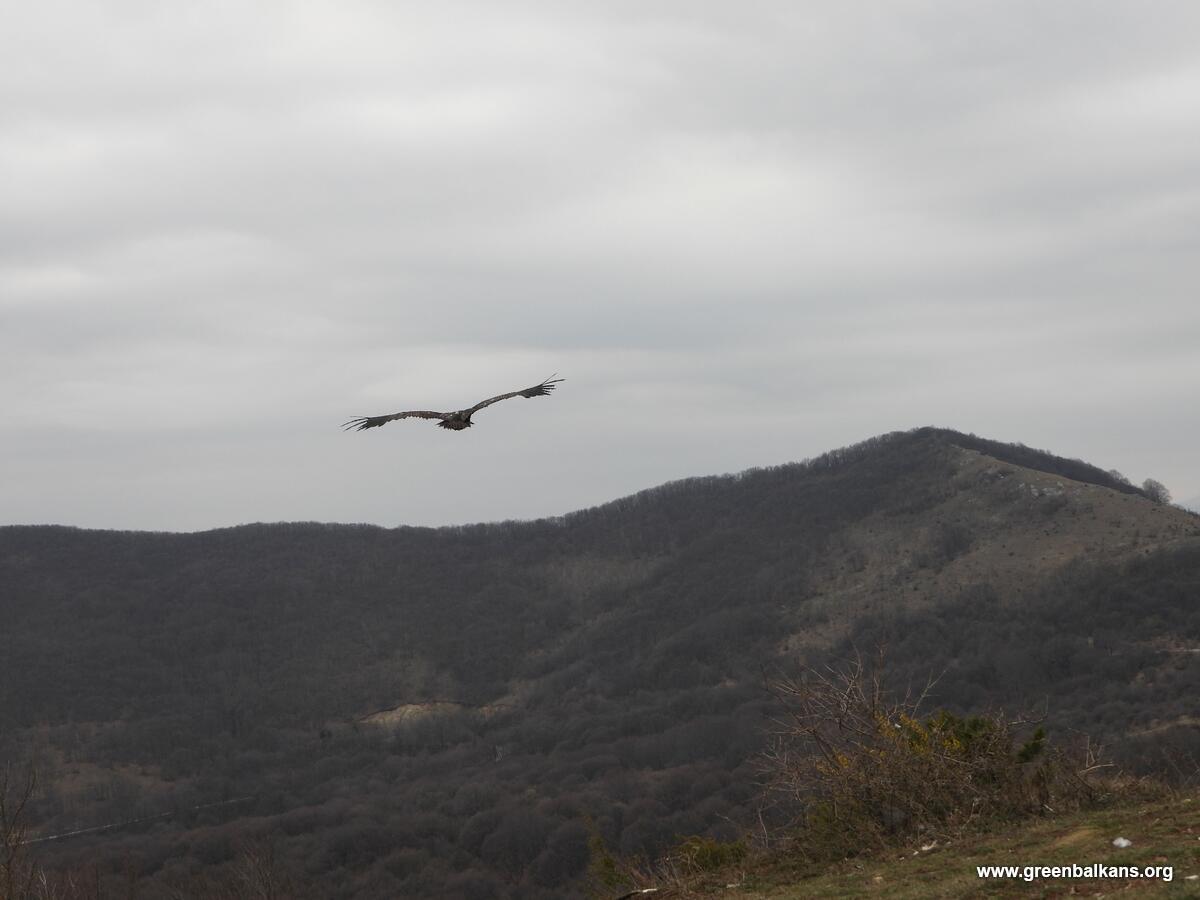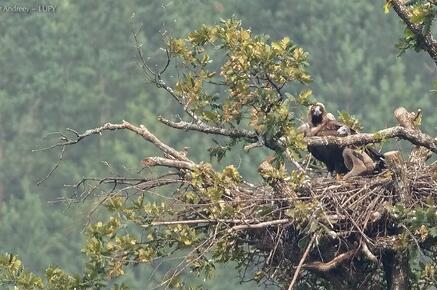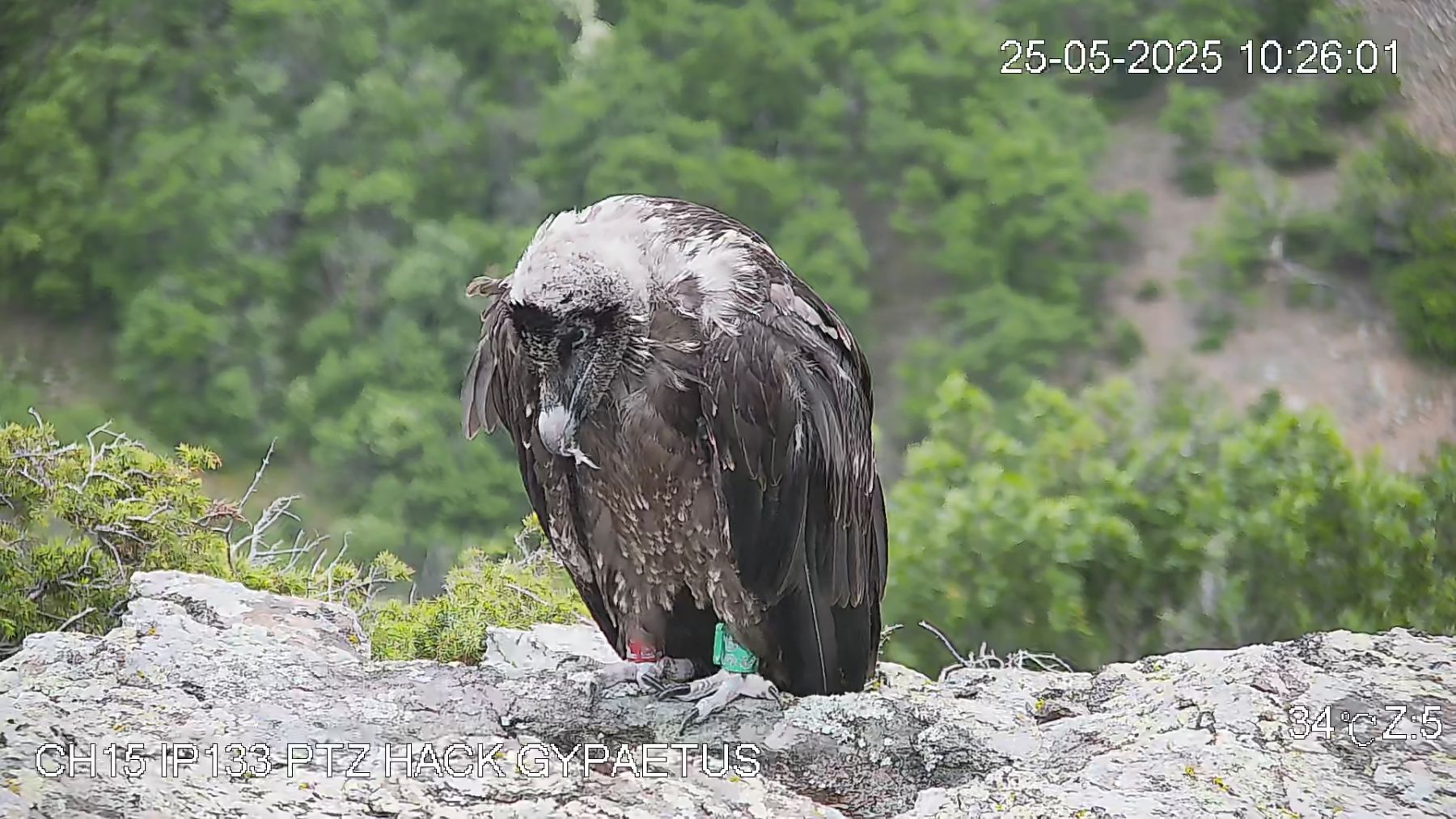Living in a vulture hotspot like Extremadura, Spain, has its perks, but it also comes with its share of unexpected situations. Our Programmes Manager, Jovan Andevski, based in Extremadura—home to one of the largest populations of the Cinereous Vulture—often witnesses these magnificent birds soaring through the skies. However, he recently encountered a rare and unfortunate situation that highlights the critical need for collaboration in wildlife conservation.

A swift rescue mission
As Jovan drove near Cáceres, he spotted something alarming by the roadside: a Cinereous Vulture chick lying motionless in the field. This unusual sight raised immediate concerns, as it appeared to be the victim of a car accident. Despite the grim circumstances, the chick was still alive, and there was hope for its survival. Jovan immediately contacted the competent authorities, who promptly arrived at the scene.


A swift rescue mission ensued, with technicians from the Los Hornos centre, run by the Junta de Extremadura, assessing the bird and finding it to be in a hopeful condition. The chick was collected and underwent medical checks by veterinarians, and it was decided that, after treatment, it could be part of the reintroduction project in Bulgaria. Sadly, despite the best efforts of the team, the chick ultimately lost its life.
While this outcome was unfortunate, the prompt and appropriate response to the incident by the relevant stakeholders demonstrates Spain’s serious commitment to wildlife protection.
Collaboration for vulture conservation
Non-governmental organizations often lead wildlife conservation initiatives, but their success relies heavily on the support of governmental bodies and other stakeholders. When authorities recognize the intrinsic value of wildlife, conservation efforts are significantly strengthened. In Spain, vultures, once considered vermin and persecuted throughout the 20th century, have made a remarkable recovery thanks to governmental intervention and protective measures.
Authorities have not only acknowledged the importance of these birds but have also allocated resources to combat threats such as wildlife crime. For instance, Spain has dramatically reduced threats by prioritizing biodiversity and wildlife protection, empowering authorities to enhance wildlife crime investigations and prosecutions, creating a strong deterrent. As a result, poisoning incidents in Andalusia have decreased by 80% over two decades, supporting the recovery of vulture populations.
Donating vultures for conservation
Spain’s regional governments of Extremadura and Andalusia have been instrumental in donating rehabilitated vultures to conservation projects abroad, playing a crucial role in bolstering threatened populations and reintroducing extinct species. The Junta de Extremadura, in particular, has a notable track record, having successfully rehabilitated and donated over 70 Cinereous Vultures to Bulgaria in the last few years. The bird that suffered the car accident was also intended for donation as part of this project.
The rehabilitation process is a critical component of these conservation efforts, and centres like Los Hornos and AMUS in Extremadura have been vital in nursing injured birds back to health. Once rehabilitated, the birds undergo a mandatory quarantine period at AMUS, followed by thorough health checks, before embarking on their journey abroad, and being transferred to the care of NGOs, which oversee their final preparations for release into the wild.

Thanks to these efforts, the Cinereous Vulture returned as a breeding species in Bulgaria in 2021, just a few years after the initial releases began in 2018 as part of the ‘Vultures Back to LIFE’ project. Building on this momentum, the ‘Bearded Vulture LIFE’ project aims to consolidate the established Cinereous Vulture population and reintroduce the Bearded Vulture to the Balkans, further solidifying the region’s position as a hub for vulture conservation.
As we reflect on the story of the Cinereous Vulture chick, we are reminded that conservation is a collective effort that requires the collaboration of governments, rehabilitation centres, and other stakeholders. By working together, we can make a real difference in the recovery of these magnificent birds and the ecosystems they inhabit.



